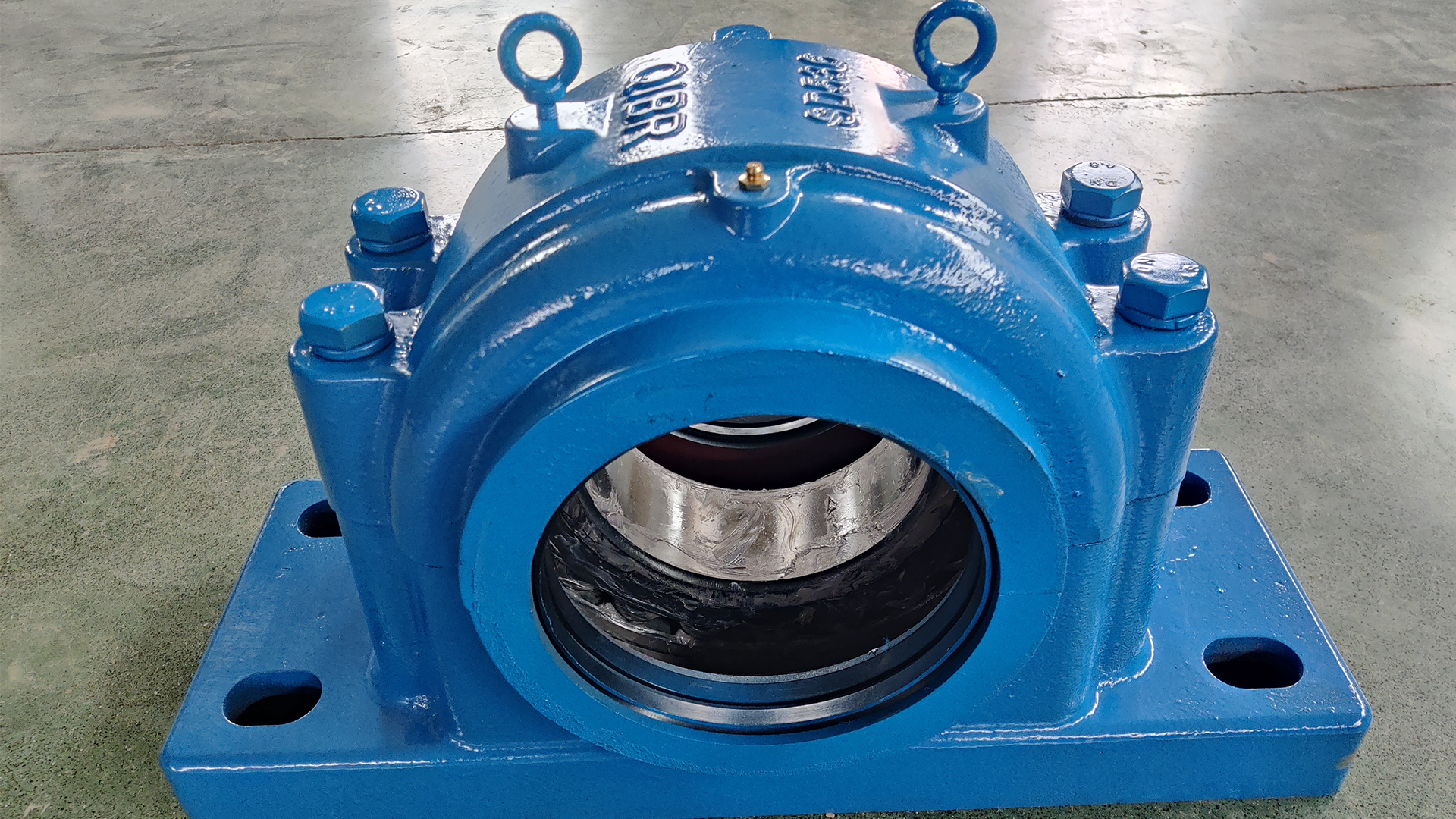Newsroom
Why is the operating temperature of fan bearings always too high?
2024-08-16We often receive calls from customers asking why bearings, especially fan bearings, overheat. Bearings can operate at higher than expected temperatures for a variety of reasons, and the specific cause of high temperatures depends on the situation.
We need to understand the operating conditions and maintenance details, such as the model of the bearing and bearing housing, how the bearing was installed, the load on the bearing, the lubrication method, the brand and type of lubricant, the type and speed of the fan, the ambient temperature, whether the fan is belt-driven or directly driven by a motor, and so on.
In most cases, a likely cause can be determined through discussion, but in many cases, further investigation is required.
Common Causes of Fan Bearing Overheating Based on Field Experience:
1. Excess Lubricant: Due to the churning effect of excess grease, newly greased bearings usually experience a slight increase in temperature. However, as the grease is pushed out of the raceways, the temperature gradually decreases. If the grease cannot escape through seals or relief holes, this will not happen. Check that all bearing housings with grease fittings have some way for excess grease to escape. If excess grease cannot easily escape through the seals, the housing should have at least one escape hole. Standard bearing housings provide such a hole at the base. In emergencies, a 10 mm hole can be drilled manually.

2. Mixing of Bearing Housing Covers and Bases: This is a common installation error in the field. Sometimes multiple bearing housings are installed simultaneously, and if the installers are not careful, they may mix the covers and bases. Always check that the markings on the top cover match the base.

3. Excessive Mounting Advance for Tapered Bore Bearings: This mainly involves self-aligning ball bearings mounted on adapter sleeves in fans. These bearings have smaller radial clearance compared to roller bearings in the unmounted condition because self-aligning ball bearings generate less friction and do not require a very tight fit to prevent creeping. Additionally, the feeler gauge method of measurement is inaccurate, and the hydraulic drive method is not applicable in fan installations because hydraulic nuts cannot be used. Bearings are usually installed with too tight a fit, leading to insufficient clearance after installation, causing the bearing to operate under negative clearance (preload) and overheat. To avoid potential problems, it is recommended to install C3 clearance self-aligning ball bearings.
4. Insufficient Mounting Advance for Tapered Bore Bearings: The mounting advance of fan bearings is determined by measuring the reduction in radial clearance. Maintenance workers may think they have achieved the correct clearance reduction, but due to lack of experience, the fit may not be tight enough, causing the inner ring to creep or even rotate on the shaft, generating heat. The best practice is to use the two-step hydraulic drive method, but fan designs often only allow the feeler gauge method.
5. Cross-Locating Bearings: Industrial fan bearings are divided into fixed and floating end bearings. When using bearings that can float internally, such as NU cylindrical roller bearings or CARB bearings, this does not need to be considered. When most fans use self-aligning ball bearings, spherical roller bearings, or deep groove ball bearings as floating end bearings, displacement within the bearing's outer ring achieves the floating effect. When the outer ring cannot move within the bearing housing, cross-location occurs. When this happens, thermal expansion causes both the fixed and floating end bearings to bear additional axial load. This additional axial load can cause axial overload and increased temperature.

6. Using Incorrect Lubricant: The most common mistake in lubricant selection is using NLGI 3 grease when the working temperature of the roller bearing is not high. The grease must have sufficient bleed rate to lubricate the bearing. If grease is chosen with a normal bleed temperature of 80°C for a bearing operating between 50 to 60°C, in the initial stage of relubrication, the grease does not have sufficient bleed rate, increasing friction and causing overheating, which may also damage the bearing surfaces. As the bearing temperature rises above 80°C, the grease begins to bleed, reducing friction and restoring temperature to normal. This cycle continues until the bearing eventually fails due to overheating. It is recommended to use grease with a bleed rate of at least 3% at normal bearing operating temperatures.
7. Long Lubrication Intervals: If the temperature of an overheated bearing decreases after adding more grease, it is likely that the relubrication interval was too long or there was an issue with grease bleed. In either case, the bearing may have suffered damage due to lack of lubrication film, even if the temperature returns to normal after lubrication. Its service life will be shortened. Long lubrication intervals are usually due to difficulty in regreasing or forgetting to add grease. It is recommended to use automatic lubricators.
The causes listed above are summarized based on field experience. Usually, after addressing these issues, the temperature of the fan bearings will return to normal. If the root cause of the problem still cannot be identified, it is recommended to conduct a more in-depth on-site investigation and analysis.
For more information, feel free to contact QIBR


